Health & Safety Note: This adventure occurred long before the current COVID-19 pandemic. Please be aware of, and follow, all local safety and health guidelines if you choose to travel during this time.
Current regulations for American citizens traveling to Cuba can be found here.
Upon realizing our trip to Cuba was finally a reality, with flights and an apartment booked, I went into full research mode. I can’t help it, I like to plan. I like to know what there is to see, experience, eat, etc. in a new location.
I don’t necessarily need an to the hour planned out itinerary. In fact, that would actually drive me crazy. I do however like to go in with a list of things that are must do’s or a bit off the tourist beaten path, that you may not know about unless someone pointed them out to you ahead of time.
When researching a new location, the first thing I do, is go on Pinterest and do a search for the location I am going to. This will usually bring up a wealth of blog articles ranging from top ten lists, must see or must do lists and off the beaten path lists. I look at everything, and old school style in a notebook, I start jotting down things that look interesting to me so I can look into them further.
The other thing I do is go to the bookstore (yes, those still exist!) and go to the travel section. Being a visual person I much prefer a travel book with a lot of photos, versus a book that is all text. Descriptions are great, but I have saved myself great amounts of disappointment by searching for online photos of a location first. Many times what is talked about as this big fancy attraction, ends up being really small and run down, and not worth the hours trek out of the way to see it.
With Cuba being so closed off to Americans, researching activities online prior to the trip was a bit of a challenge. It’s not like most major tourist areas that have a big fancy website…or at least they didn’t at the time. Most of what I found online came from British travel bloggers.
A number of them mentioned taking a day trip out to Viñales Valley, as it not only shows you the very famous history of Cuban cigars, but the scenery was just breathtaking. So breathtaking in fact, UNESCO made this area an official World Heritage Site in 1999!
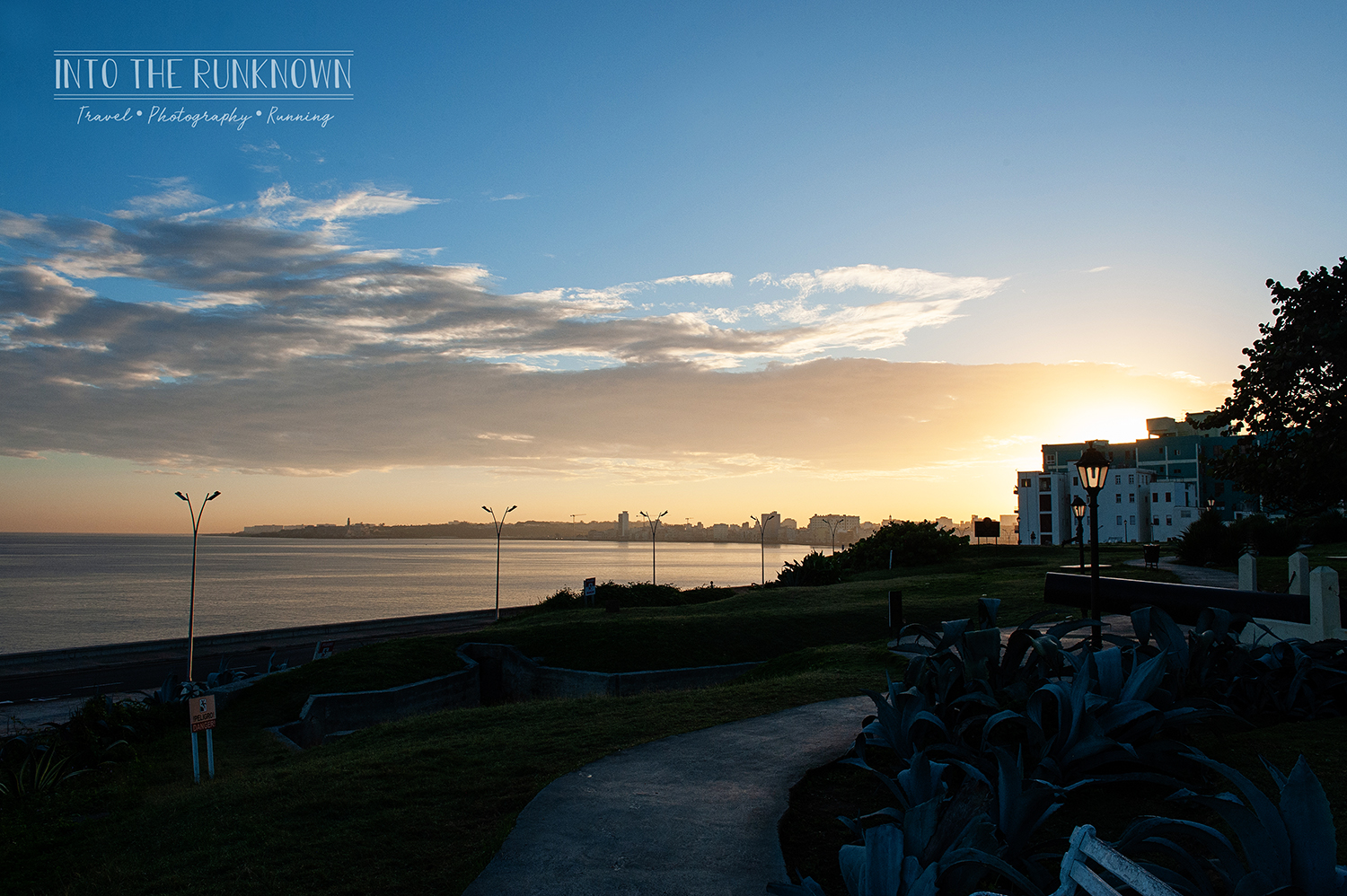
There are two ways to get to this area. The first was by car, either renting one and driving yourself, or by hiring a private driver to take you there. Renting a car seemed like a horrible idea for many reasons! The roads, as many mentioned, are horribly maintained dirt roads that will “eat your car alive, leaving you stranded in the middle of nowhere”. You also have no cell service or fancy navigation to guide you. Oh and lastly, it’s like a 2-3 hour drive. So, no thanks!
The second, and what ultimately after much debate seemed like the best option for us, was to go with a tour company on a bus. I personally am not a big fan of tour groups. They are lovely if you are nervous about traveling to a new place, or really want to get an in depth history lesson along the way.
I would much rather do my own thing on my own schedule though…mainly so I can stop for as long as I like to take photographs. I was a bit leery but it was clear, either go with the tour group or don’t go at all.
If you plan to use one of the tour companies, you will need to purchase your tickets at least one day in advance, as we found out the hard way the day prior.
The tour companies stopped at a number of hotels around Havana, but we used the Hotel Nacional as our pick up location. Tickets were $67 pesos per person for adults through Cubatur for a day trip..
We got up early again, to get cleaned up and grab breakfast. We needed to be at the hotel a little before 8am for the bus, but arrived a good bit earlier to be safe.
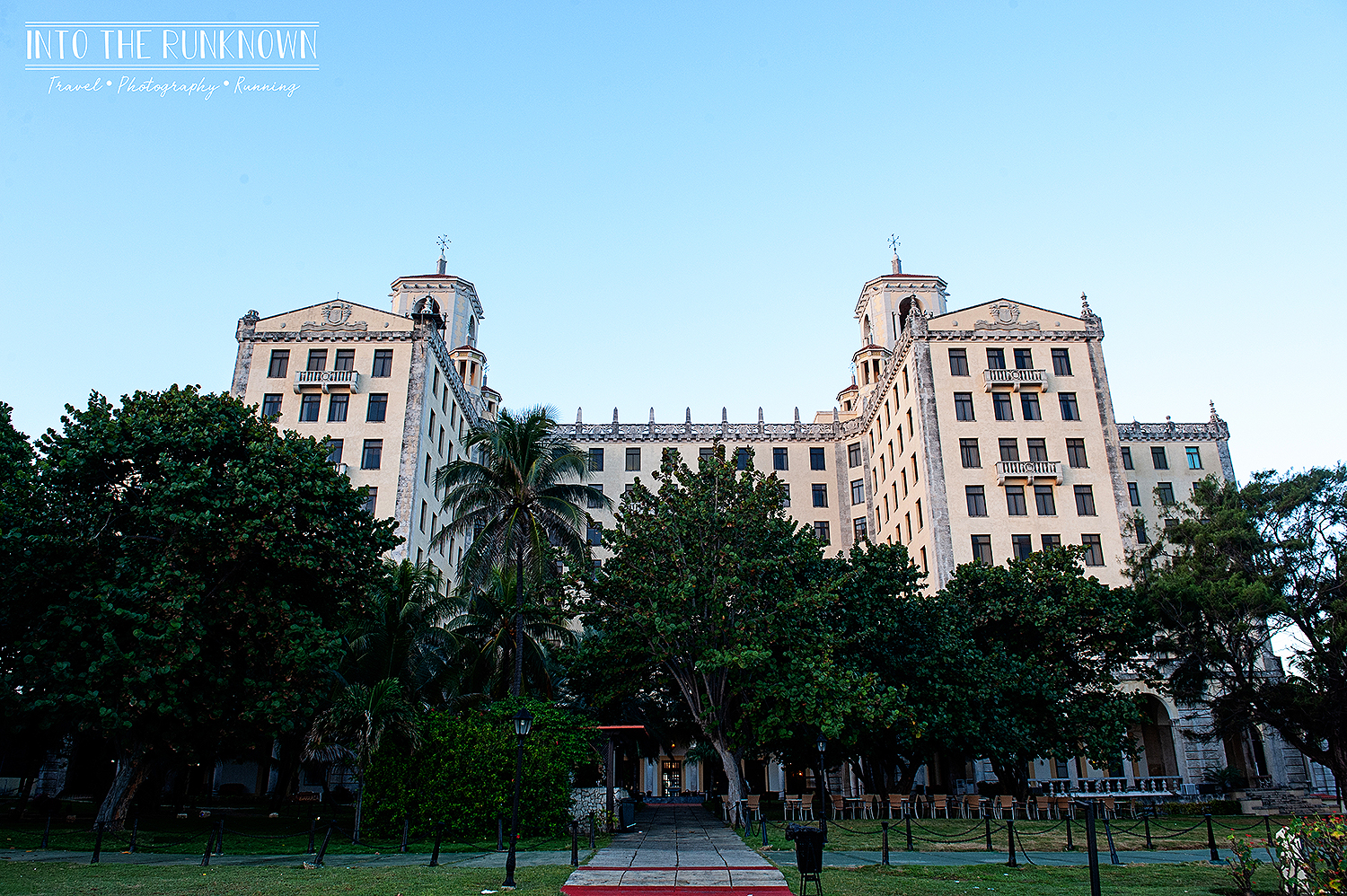
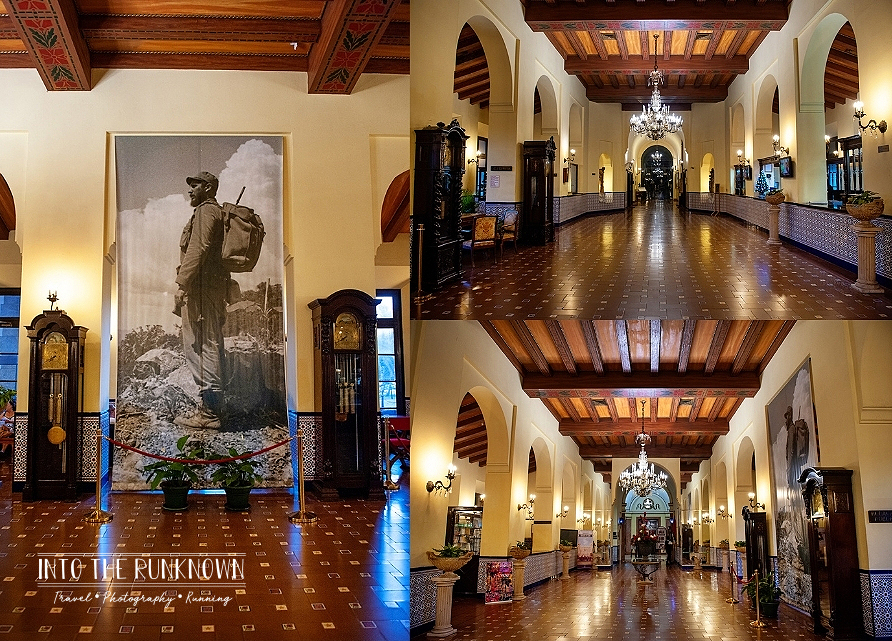
8am came and went, and there was no sign of the tour company. We got a bit worried that maybe we had the wrong time or the tour was canceled or worse, they took our money and there was no tour.
Finally around 8:30 our tour guide Rodrigo came rushing into the lobby apologizing for the delay. There were issues with pickups at the other hotels so they were running late. He led us out to the bus, and we hopped on in the few remaining seats available.
As we drove along the highway, Rodrigo pointed out some items of interest, such as a large lake where their Cuban Olympic National Rowing team would practice, some fields of sugar cane, and big belly palm trees that look just like you would expect. Big round bellies mid-way up the trunk that store water.

Our first stop on the bus tour was at Guayabita del Pinar Liqueur Factory, in Pinar del Rio. The bus pulled up and parked along the curb outfront, behind a line of three or four other tour buses. This was red flag number one that we were about to be hustled in a good old fashioned tourist trap.
Our guide shuffled us all off the bus and towards the very crowded and chaotic entrance for our tour. I am not a big fan of large crowds of people and attempted to remain outside. I quickly got the stare down from our tour guide, that indicated going in was not optional. Inside I went along with our bus full of people.
Once inside, this place had less of a factory vibe and more of a home garage distillery setup. It had one main room with a single bottle assembly line and a very small gift shop off the entrance. A gentleman from the factory gave us a short explanation of the liquor making process, which was admittedly interesting, then insisted we all have a taste.
Despite their persistence, I opted to hide in the back of the room and avoid tasting anything. I know for fact, many hard liquors do not agree with my stomach and make me very sick. I was not about to ruin my full day tour by tasting some mystery liquor at 9am. I am also a bit of a germaphobe, and this factory wasn’t exactly giving me the warm fuzzies when it came to health codes. Based on the faces of those who did try it, I think I made a wise choice!
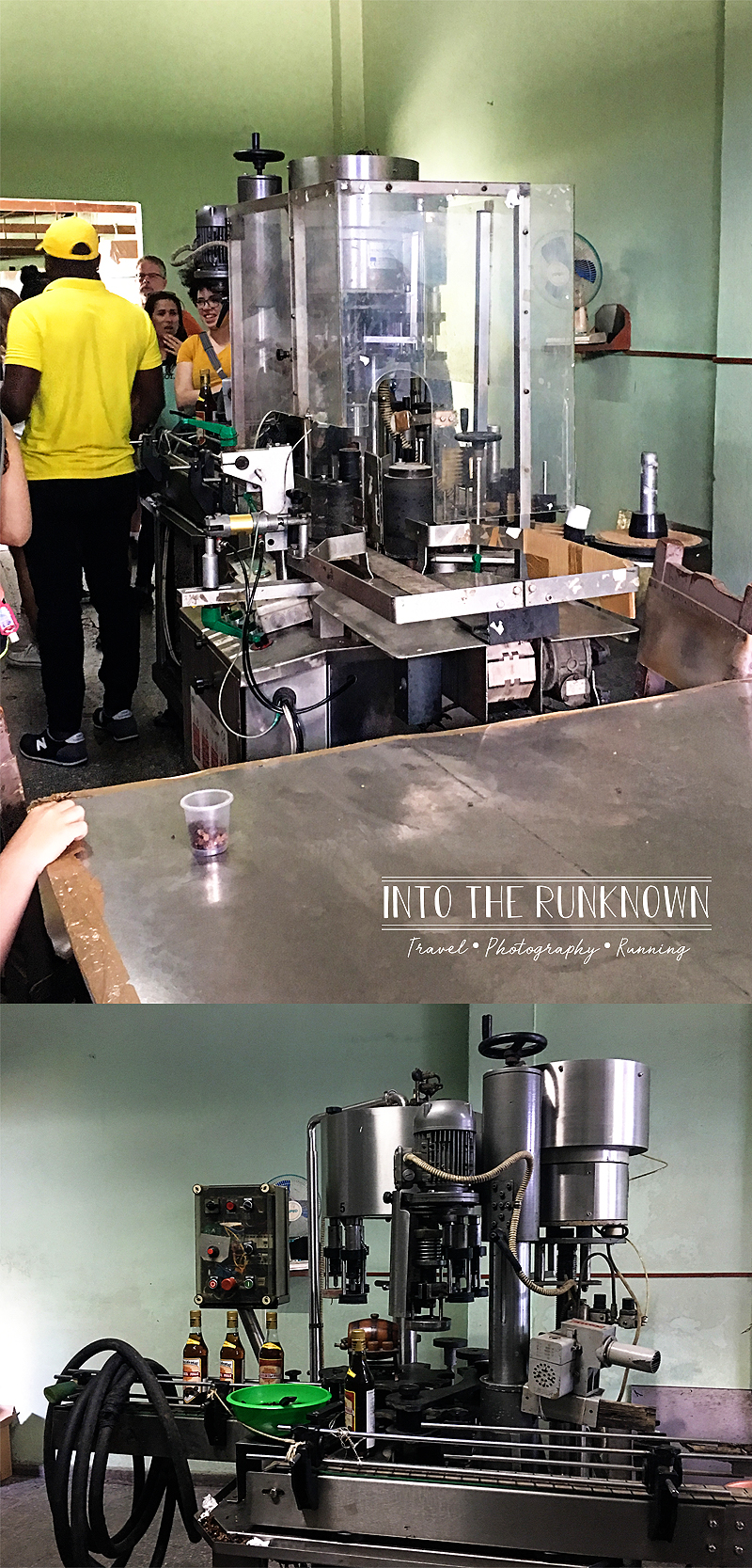
Once the tasting was over, like cattle, we were all moved along to the gift shop. There they had bottles of Guayabita del Pinar for sale, as well as regular rum and Cuban cigars, which we later found out to no surprise were all massively overpriced. It was made pretty clear that making a purchase, much like entering the building, was not optional. Kelly and I managed to sneak out the front door without buying anything and waited for our group to come out.
If this was any indication of how things were going to go for the rest of the bus tour, it was going to be a long day!
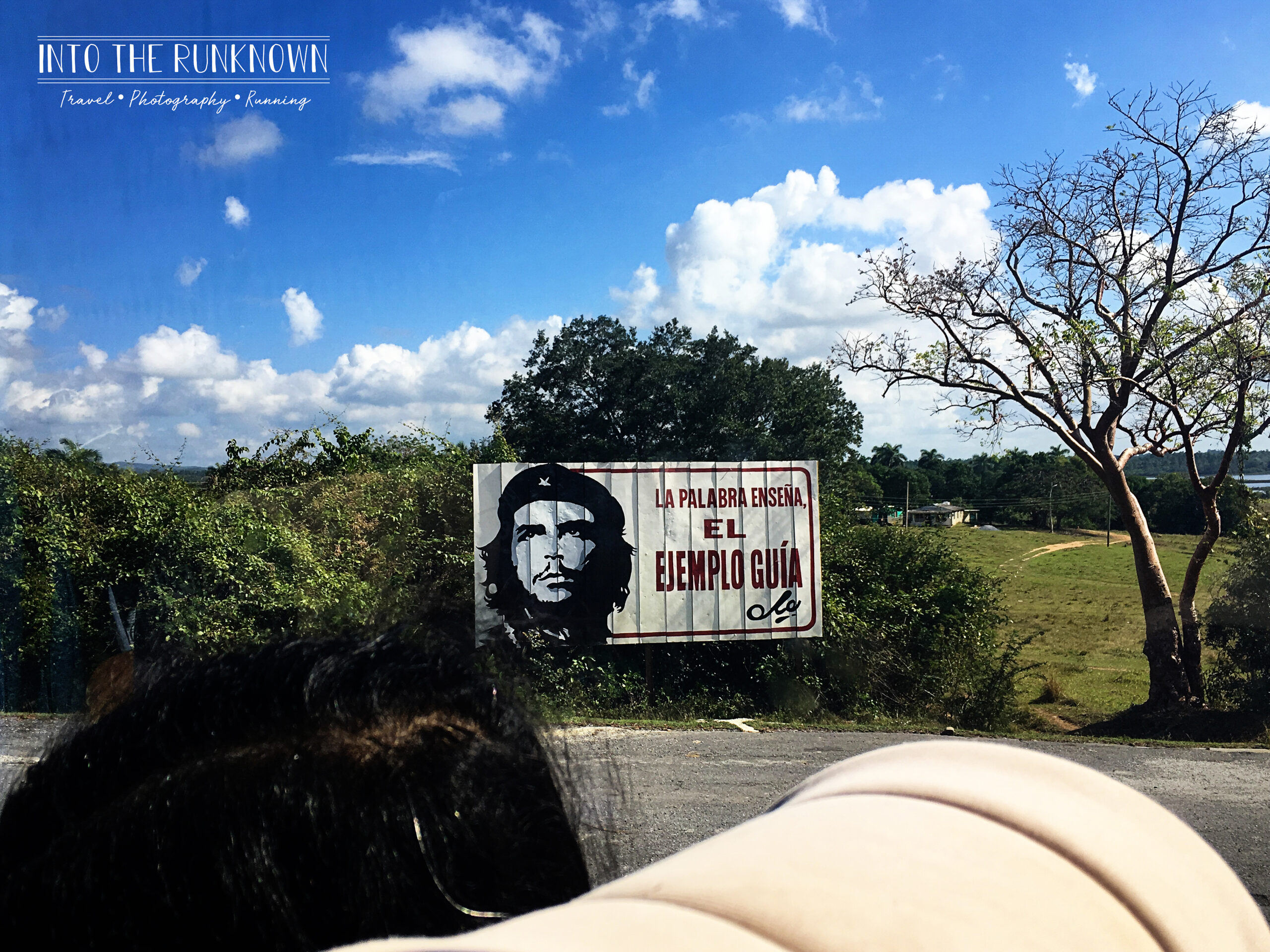
Back on the bus, we drove about 30 minutes north into Viñales Valley and pulled into a tobacco farm parking behind, you guessed it, another line of tour buses.
As we parked, we noticed a woman who was there with another tour group, and clearly suffering from heat exhaustion. They got her some bottled water and back on the air conditioned bus. This is your friendly PSA that drinking the bottled water in Cuba will not kill you!
The farm, despite clearly being setup for tourists, was actually really pretty! There were a few wood tobacco drying huts, surrounded by acres of lush green tobacco fields. Not knowing how long we would be there, I snapped a couple of landscape photos quickly before we were ushered into the largest of the huts.
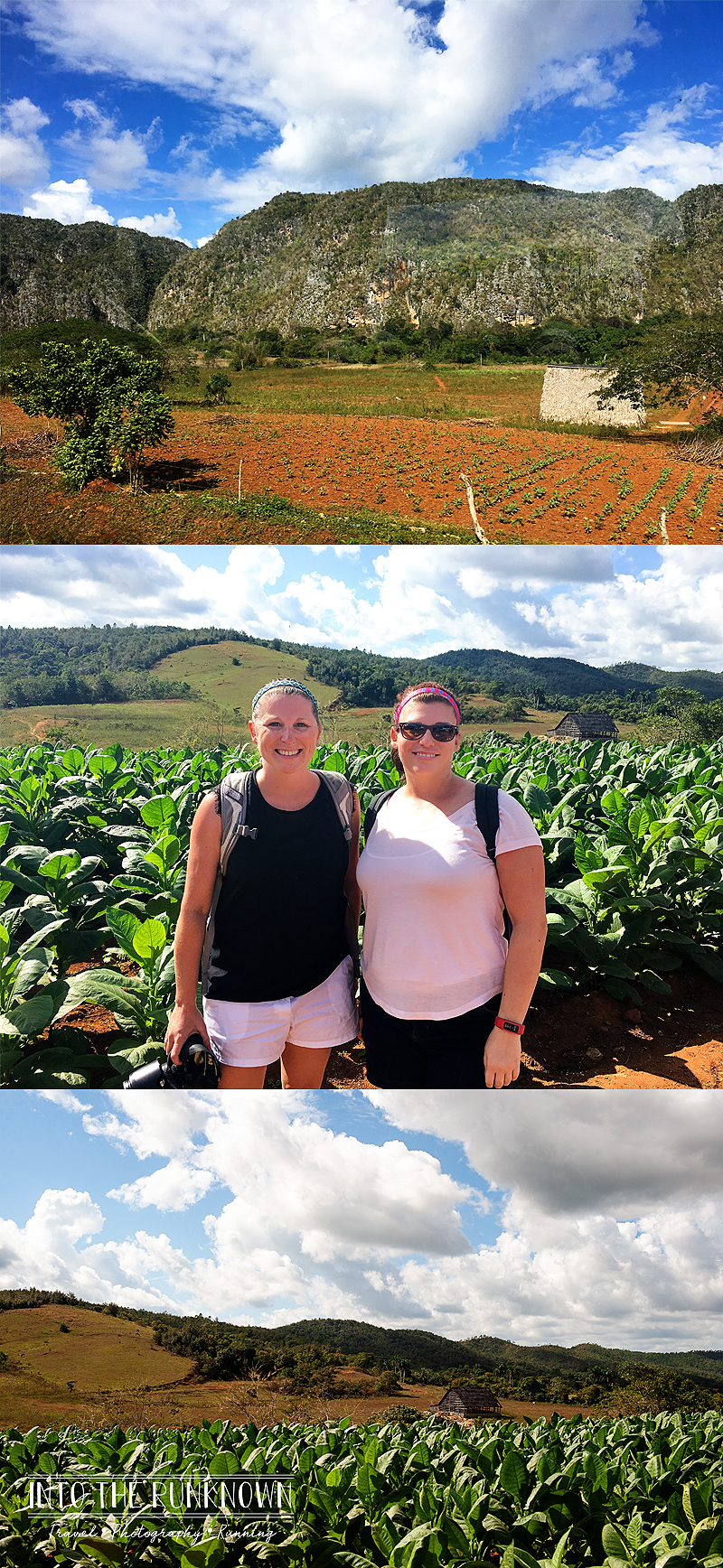
It was quite dark and somewhat cool inside compared to the bright hot sun we were just standing in. Once my eyes adjusted, I looked around and noticed there were rows of open framed walls, made from trees that had been hand whittled down into round beams. The outside walls of the hut were made of dried palm leaves, and the floor was a deep reddish-orange clay dirt.

A gentleman from the farm started the demonstration for us, entirely in Spanish. Thankfully our tour guide translated the entire thing into English, for those of us who were not Spanish speakers. I quickly realized though, our guide has given the demonstration so many times, that he pretty much had it memorized, and wasn’t necessarily waiting for the other gentleman to speak before starting the translation.
They began to explain the process from planting the seeds, to the harvest and drying out the leaves, and then of course gave a demonstration on how to roll a proper Cuban cigar.
While there are tobacco fields in other areas of Cuba, Viñales Valley just happens to have the perfect growing conditions for this particular crop. The temperature averages in the low 70’s year round, with humidity levels in the mid 60’s, though both were much higher during our visit in January. The soil there is also rich with nutrients, creating the perfect combination for hearty tobacco crops.
Tobacco seeds are extremely tiny, in fact roughly 300,000 seeds would fit in a one ounce container! Farmers sow the seeds one at a time in small plots of land usually in late October.
The seeds take approximately four months to grow into mature plants that can then be harvested by hand, bundled, and hung to dry on those open framed walls inside the hut. During the busy season, the entire hut will be filled to the top with drying leaves.
The leaves take around a month and a half to two months to be fully dry before they are then re-dampened with a special sweet mixture, flattened, and left to ferment for a couple of months.
Once fermented, leaves are sorted by where they grew on the plant. The leaves on the outer to middle portion have the strongest flavor, are usually much more durable, and therefore are used as a binder to hold the cigar together. Leaves from the middle and most central area have the weakest flavor and break down more easily. Because of this, they are typically used as filler to prevent the cigar from having an overwhelmingly strong taste, and to allow it to burn more easily.
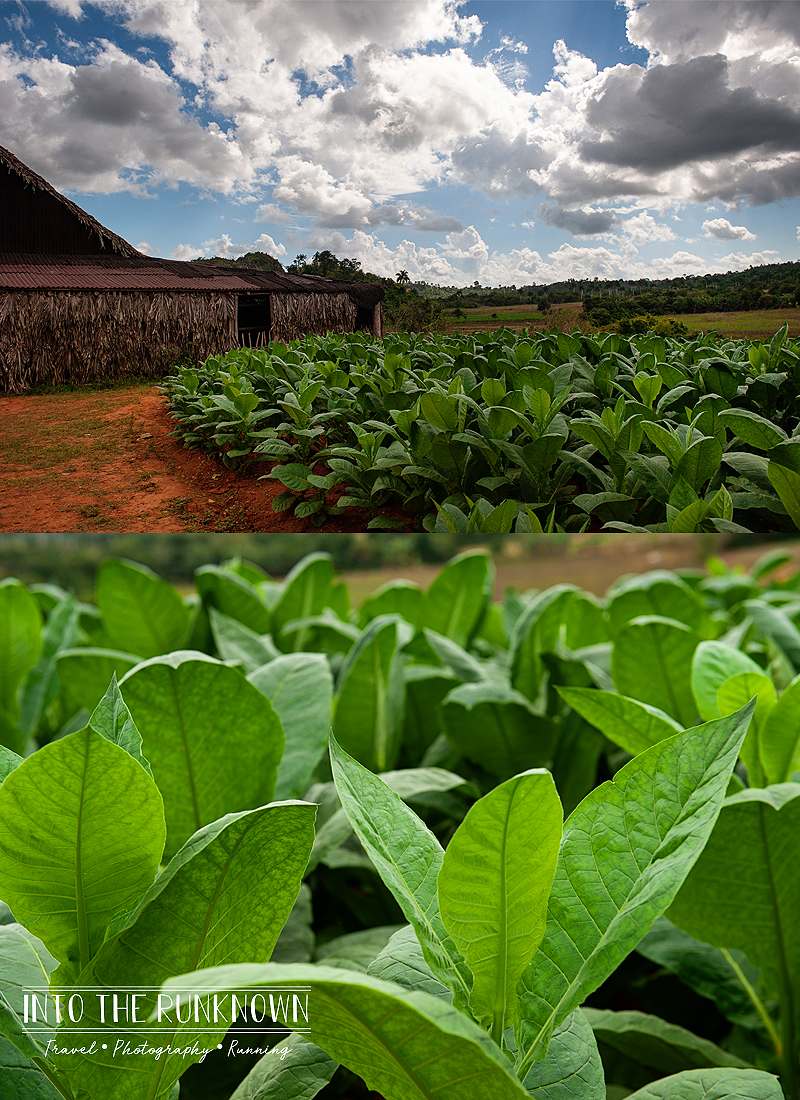
The man giving the demonstration pulled out a black bag filled with dried leaves, and began to flatten them out on the small table in front of him. He carefully removed part of the center vein from the leaves, which is where the majority of the tobacco resides, and used a rounded knife to cut and straighten the edges. He then began layering the middle binder leaves on the bottom, and the thinner more delicate filler leaves on top, and rolled this into a tube shape. As he worked, he ran a dab of honey with his finger down the seam of the leaves. This is done to hold them in place once rolled.
Finally he uses a wrapper leaf, a leaf that is typically grown in the shade so it doesn’t grow quite so thick and tough as the other leaves, and rolls this as the outer layer.
The entire process took all of maybe five minutes, but you could tell he had been doing this for years, and was very experienced and skilled.
He cut the end of the cigar and offered to light it for anyone who wanted to take a few puffs. Considering I have only smoked one cigar in my life, one drunk night in college, I decided to pass.
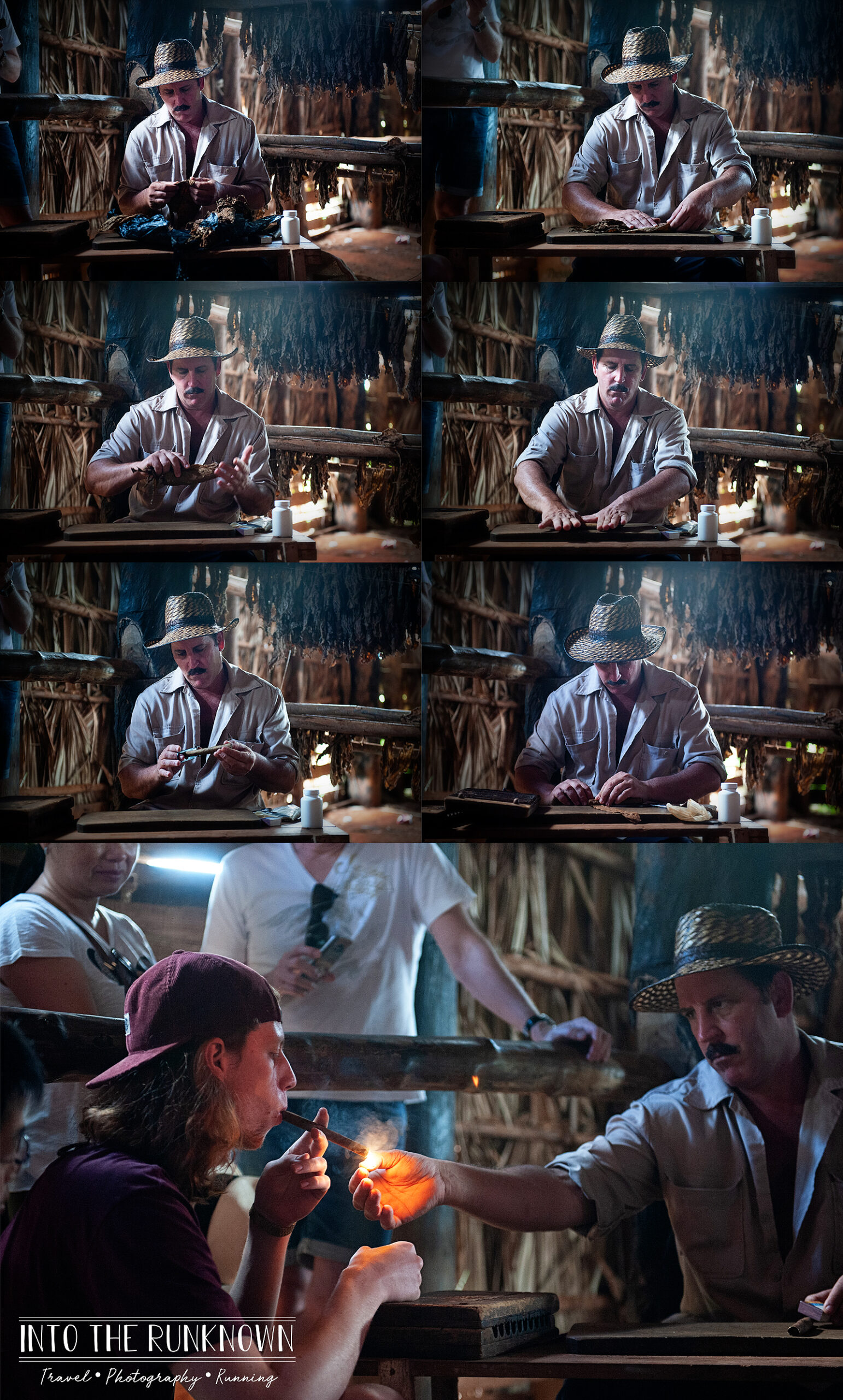
Once the demonstration was over, our guide explained we could purchase bundles of cigars at $20 pesos for 10 cigars. I immediately thought we were being hustled again, just like at the liquor factory. We had yet to even shop for cigars around town, so we had no clue how much they cost.
Our guide explained that the Cuban farmers are required by law to sell 90% of their tobacco crops to the Cuban Government for a set price. The remaining 10% are sold to tourists at whatever price they wish.
Our guide continued to ensure us that they were actually really good quality and $20 pesos for a bundle was a steal. I had plenty of cash on me and rolled the dice on two bundles.
A number of friends and family members who knew I was going to Cuba, asked for Cuban cigars as souvenirs. I figured even if they suck, it was still really neat to be able to gift Cuban cigars straight from the farm where they are grown and rolled.
To be safe, I ended up purchasing a handful of brand name labeled cigars from a shop in town later on in the trip, and gave everyone a brand name cigar and a farm cigar to compare. Every single person said the generic farm cigar was hands down the best cigar they had ever smoked!
After a few more photos around the field, we all piled back into the bus to head to our next destination, lunch!
When I started researching Viñales Valley, a couple of locations continued to pop up in search results over and over again, besides the tobacco fields of course. One was this fairly bizarre mural painted on the side of a cliff wall. It was called the Mural de la Prehistoria, or Mural of Prehistory in English. I would try to describe it, but in this case I think a photo is the only way to go.

As you can imagine, I was a bit confused as to why this, shall we say, not aesthetically pleasing mural, was getting so much hype on travel blogs. Having seen it in person, I am equally as confused today.
By no means would I have planned to make a trip out of the way to see it, but I was fairly amused when it suddenly appeared out of the bus window, and we made the turn down the roadway where it was located.
The bus parked in a lot, and our guide showed us over to a large patio with a straw roof and long tables, and explained this is where we would be eating lunch. It was appropriately called the Restaurant Mural de la Prehistoria.
While they prepared our food, we were free to roam the property and check out the mural as well as the gift shop. I grabbed my camera and decided to stroll down the lawn towards the mural to get a closer look.
It was painted by Leovigildo González Morillo, the former Director of Mapping at the Cuban Academy of Sciences, and was intended to portray world history up until the time of humans existing on earth.
You could tell it was in the midst of a restoration, as some of the paint was older and faded, and other areas were fresh and vibrant. It certainly wasn’t a master work, but it was interesting to see in person nonetheless.
On my walk back to the table, I noticed a gentleman with an ox on a rope leash surrounded by a crowd of people, so clearly I had to stop and see what this was all about. As it turns out, the ox does tricks. Yep, you read that correctly!
They have a whole bit where the ox lays down and on command pretends to be asleep with its head in the man’s lap. He of course then holds out his hat at the end for donations. It was a little odd, but I applaud the hustle!
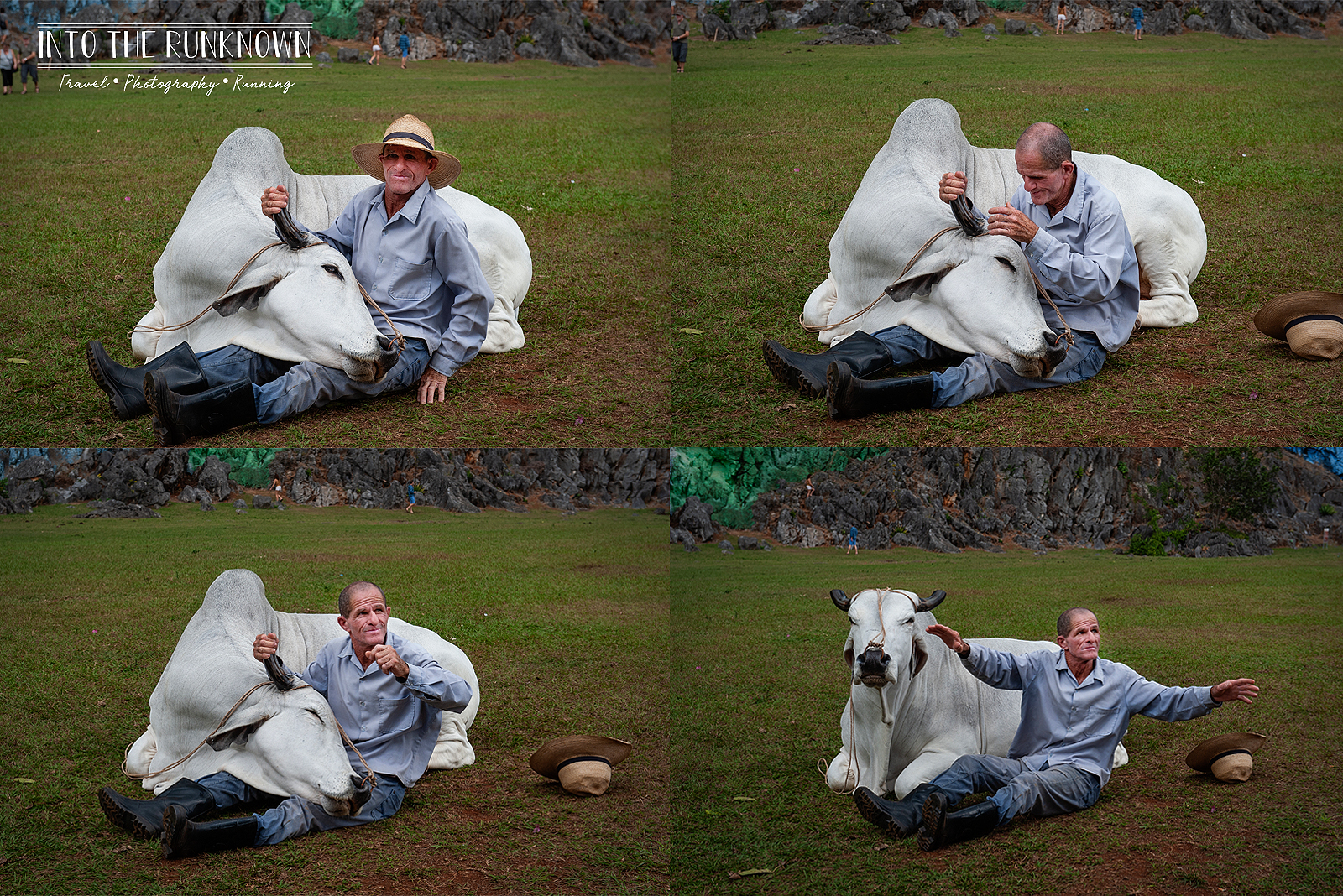
Finally our food was ready, so I went back over to join the group for lunch. The family style setup with the long table and large bowls of food that everyone took from was nice. It allowed you to get to know your fellow tour mates a bit, rather than just sitting with your own small group.
The food was also really good, which as we learned during the days earlier, meals could be hit or miss. We had watermelon and grapefruit slices, a cabbage and green bean dish, yellow sweet potatoes, rice and beans and pork.
Once everyone was done our meal, we loaded back into the bus for our next stop. Since we booked this tour as a sort of spur of the moment thing, we really had no clue what we would be seeing or doing other than the tobacco farms.
It turned out our next stop was another one of the locations I saw suggested a number of times when researching our trip, Cueva Del Indio or Indian Cave. Like our other stops, it was obvious that this was really a tourist only attraction, and that the locals were not coming here to hang out on weekends. That being said though, the cave was actually pretty low key and enjoyable, compared to say the liquor factory earlier in the day.
A guide from the cave collected us, and guided us up a set of steep stone stairs and led us into the entrance to the cave. As we walked along the dark tunnel, he explained that the cave was named after the Guanajatabey Amerindians, an indigenous group who lived in Western Cuba long before Christopher Columbus arrived there to explore.

The Guanajatabey Amerindians were a group of hunters and gatherers who used caves such as this one for shelter, rather than building new dwellings. Any signs of their inhabiting this cave are long gone, but the cave did have some really neat formations in the walls and ceiling that the guide pointed out as we walked.
The walk was roughly half a mile long, maybe a tad longer. I tend to stick to the back of the crowd during tours like this, so I can stop and take photos along the way without disrupting the other guests. That unfortunately usually means I can’t hear much of the tour or see what we are approaching ahead.
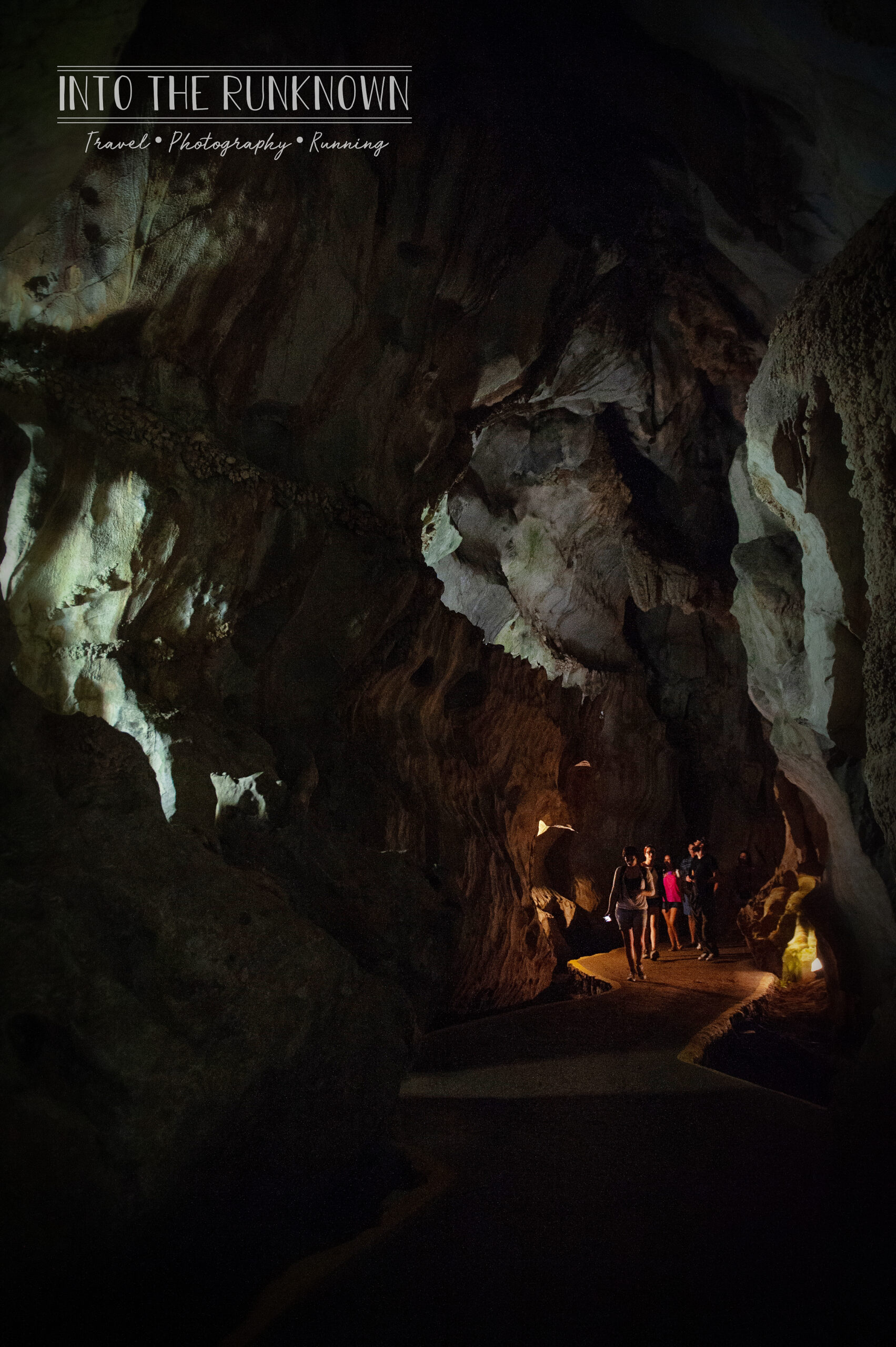
The line suddenly stopped moving, but of course being so far back I had no idea what was happening. Much to my delight after a short wait, I realized we were climbing into boats to continue our tour on an underground river inside the cave!
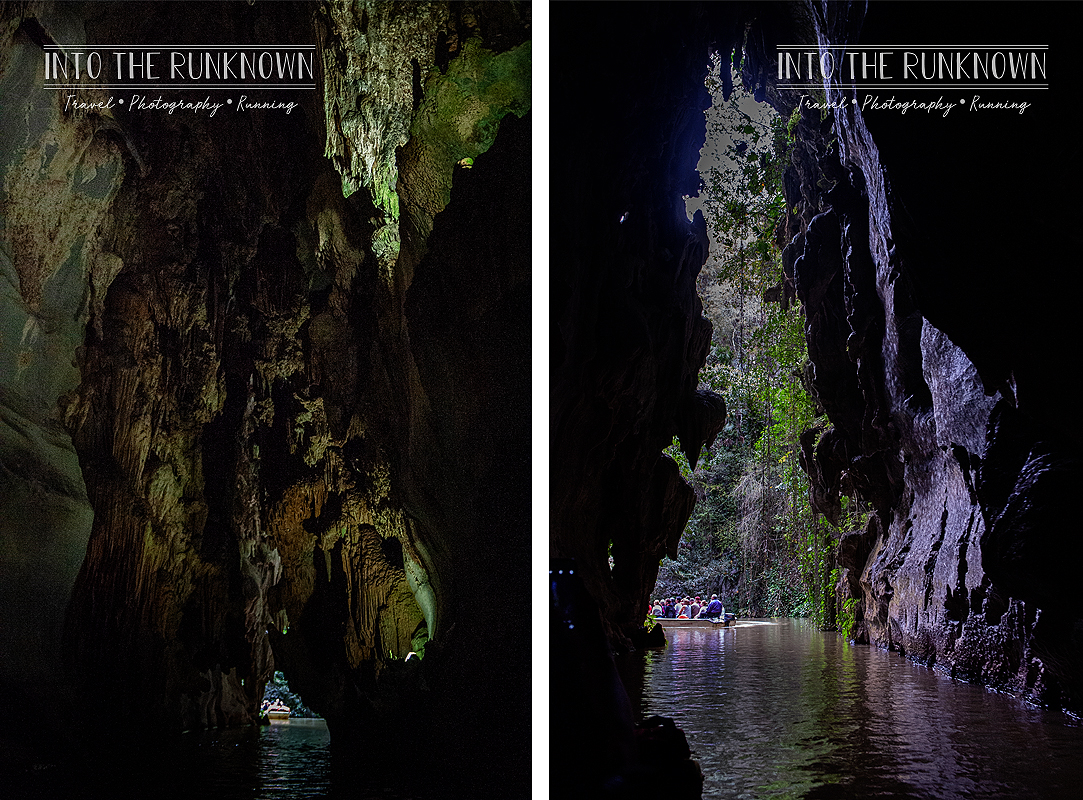
The boat ride was fairly short but definitely a unique experience. The guides continued to point out various formations in the shape of fish and turtles. At the end of the ride you floated out of the cave opening that looked like something out of a fairy tale, with long stringy green vines hanging from the cliff side above.
The boat let us out and our tour was over. After a quick stroll through the gift shops, we were back on the bus and headed for our final destination, and I can assure you, they saved the best for last!
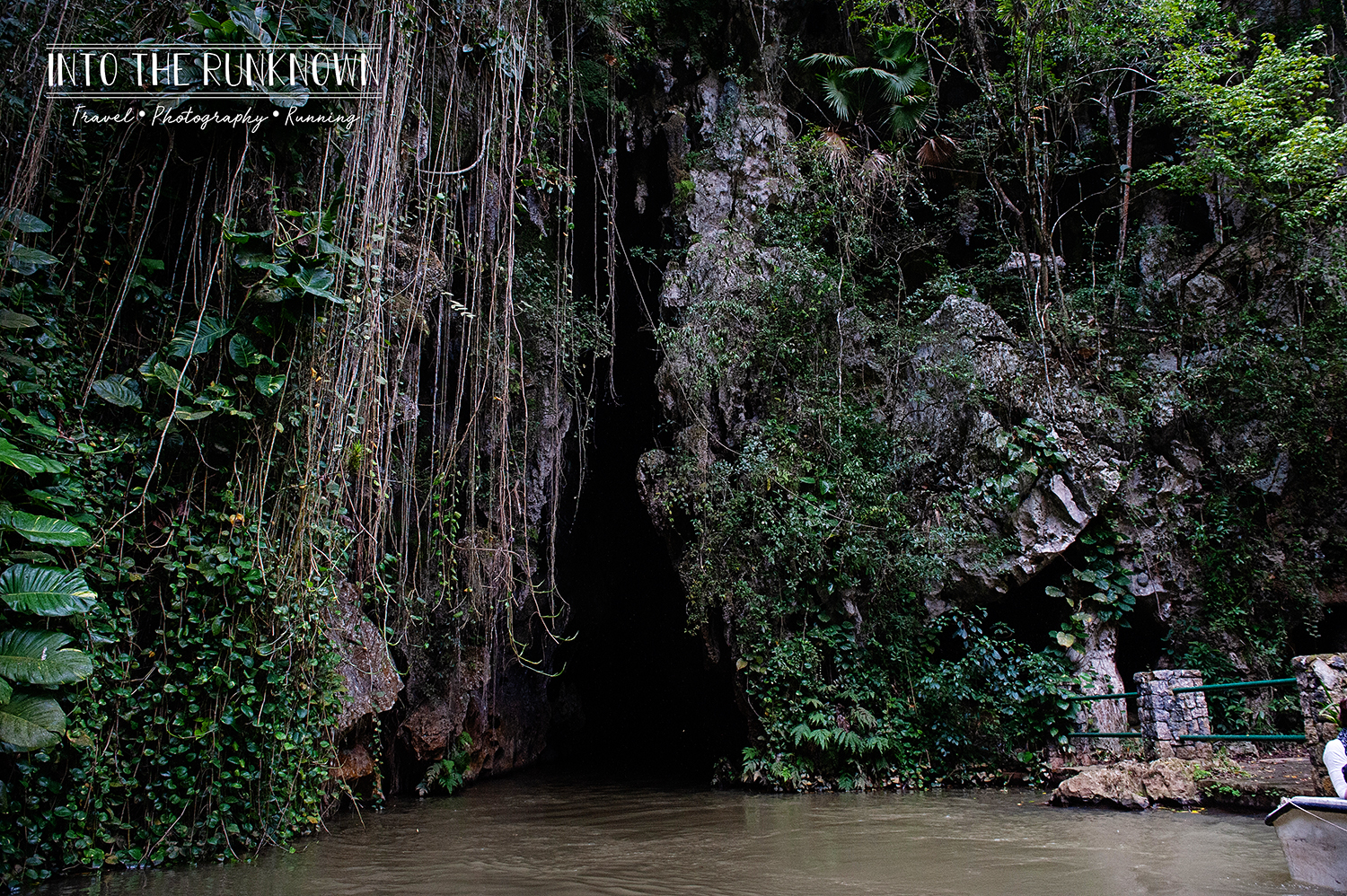
Our ride from the cave was a short ten or fifteen minutes, and took us past a number of vibrant but worn homes along the countryside. We made a turn and started heading up the mountain side directly into a sizable rain storm. Our bus pulled into a parking lot next to this bright pink hotel and we all sort of looked at each other confused, like why is a hotel on the list of stops.
The tour guide insisted we all get off the bus despite the rain, and walk over to the covered terrace. It was like they had transported us straight into the middle of Jurassic Park, minus the actual dinosaurs of course. If my face was an emoji, it would have been the one with the red hearts as eyes.
This was one of the most gorgeous landscapes I have ever seen in my life, and immediately made every pushy touristy part of that group tour worth it!
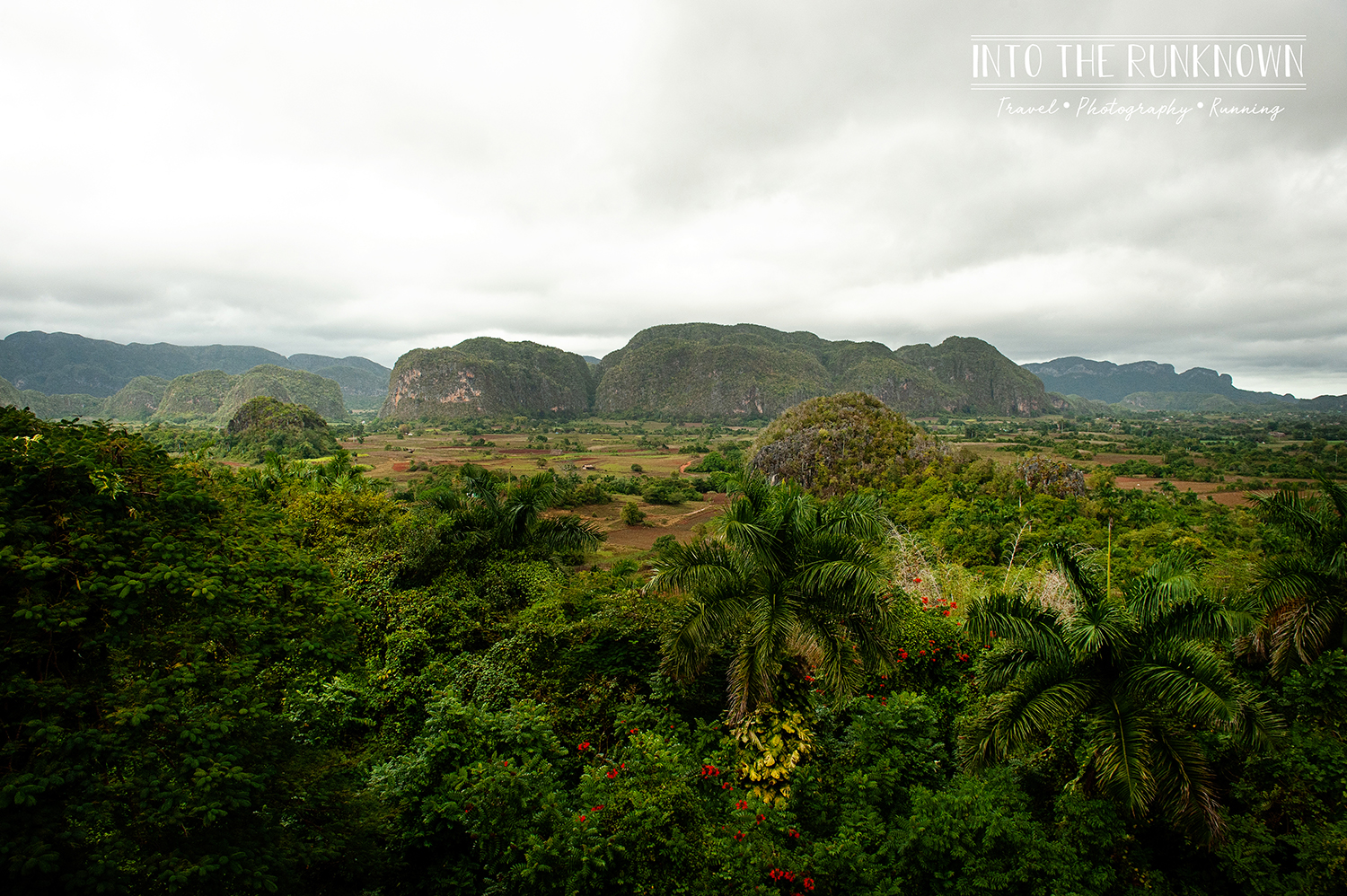
The large round mountain-like mounds off in the distance are called Mogotes, which are almost entirely unique to this area of the world. They are formed by limestone sediment, that has built up slowly over a long period of time, as tectonic forces push the sediment up from the ground.
Because limestone is a fairly soft stone, the tops become round from rain and wind erosion. The sides of mogotes are typically very steep, and therefore this area has grown somewhat popular as a rock climbing destination.
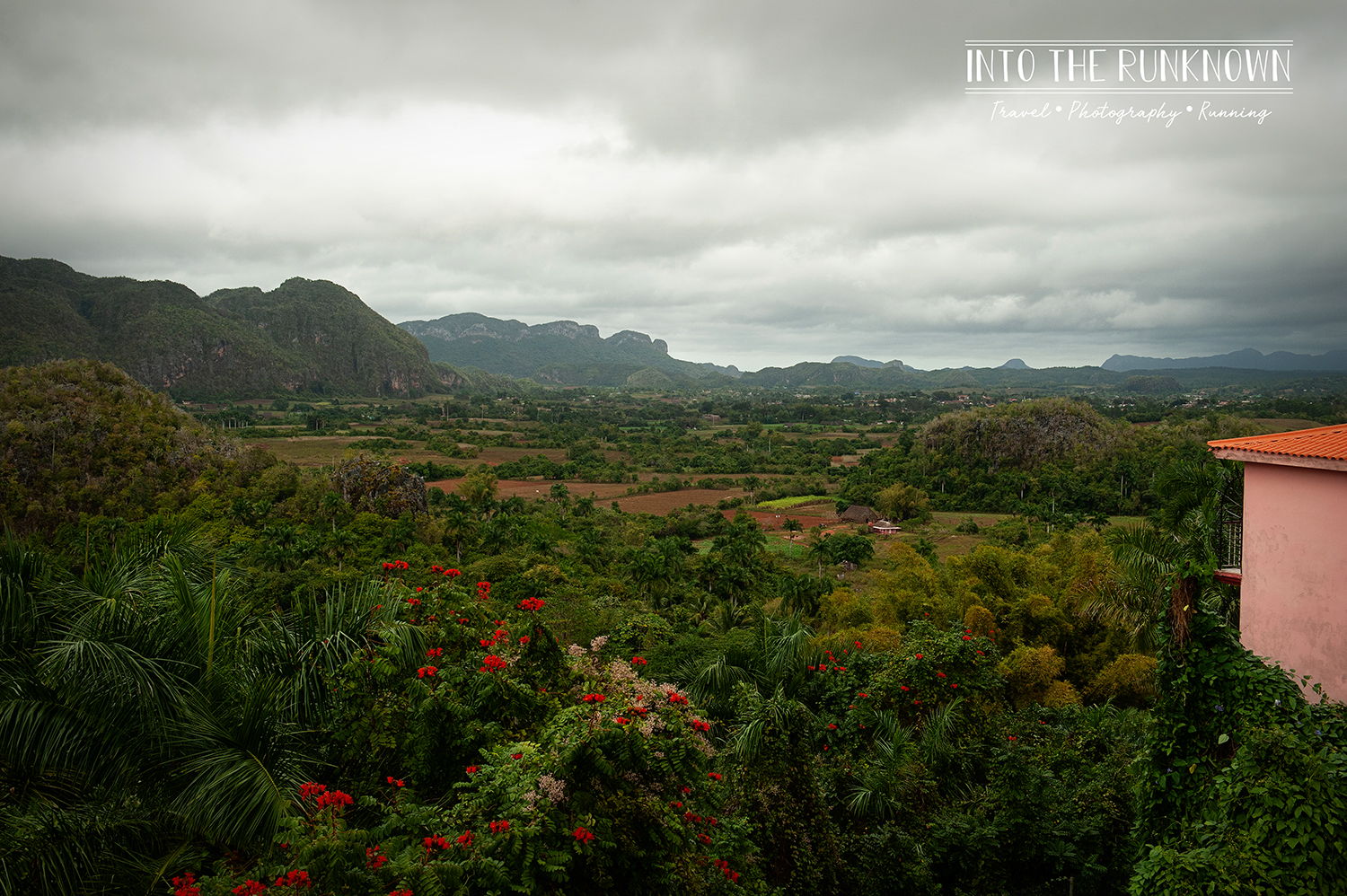
The hotel with this amazing view is the Horizontes Los Jazmines, in case you ever want to stop there, or even better yet stay there for a night or two. It is painted typical caribbean pink, with a dark red tile roof, and has a sizable bright blue pool with palm trees overlooking that amazing view across the valley. If I ever make it back to Cuba, a couple night stay there will 100% be occurring!
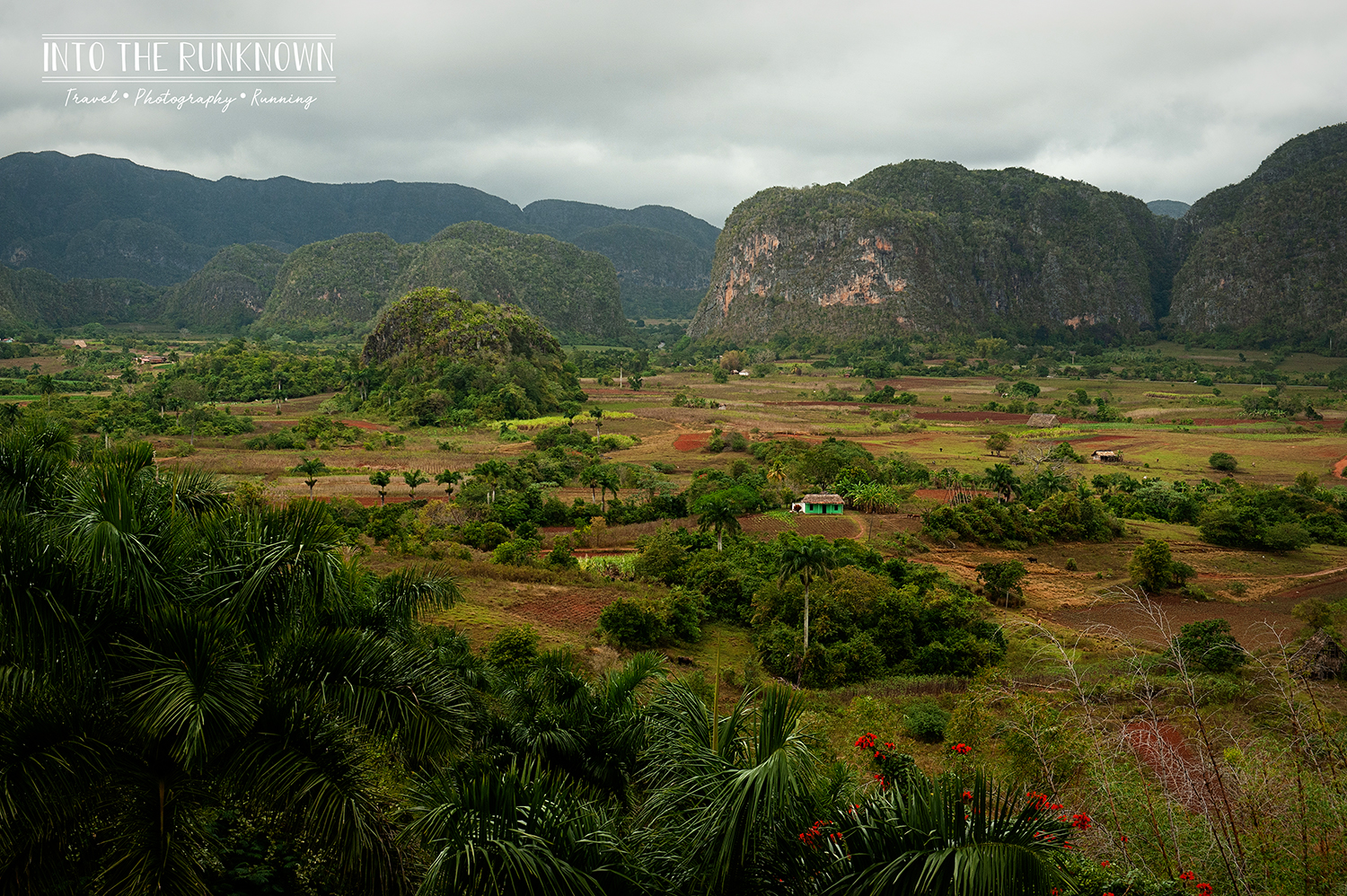
It was starting to get a bit dark at this point and since dinner was not included in the trip, it was time to head back to Havana and drop everyone off. The driver made a quick stop at a public restroom building along the highway, since it was going to be about an hour or more drive back to the city. The restroom came with it’s own free range chickens and mule on the lawn, all of which provided great entertainment to us while we waited in line.
Upon our arrival back in Havana, we met up with Philip for dinner at the same pizza place we ate at night one. After last night’s dinner, we didn’t want to take our chances, and opted for a restaurant we knew would have tasty food. I got another margarita pizza and of course a daiquiri or two. After all, we are on vacation!
Despite my dislike for organized tour groups, I was quite happy that we had decided to take a day and venture outside the city. Many tourists who visit Cuba come in via cruise ship, and only get to see a small sliver of Old Havana. Cuba is so much more than antique cars and crumbling buildings, and this tour let us experience some of that first hand.
Now time for some sleep and another full day adventure in the morning!

Thanks for the tour, it was like I was there! Very well written.